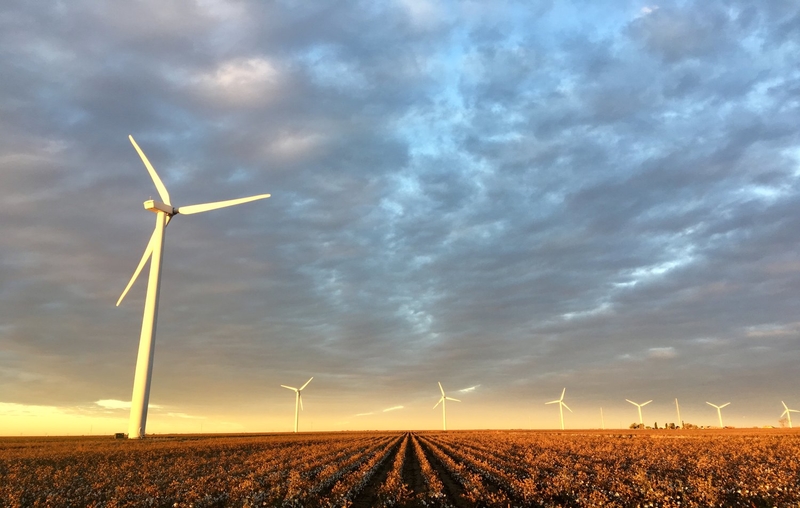System Design
Hydraulic Design for Dammed Reservoir:
The pipe network has been designed to connect the lower and upper reservoirs to allow water to flow between each. There are two separate pipes, one to pump water to the upper reservoir and a second to discharge water to the lower reservoir. The system shall pump water from the lower reservoir to the upper reservoir when energy is being produced but not purchased. When energy is in demand, the system shall release water from the upper to the lower reservoir, generating energy through the hydroelectric turbines. Below, Figure 12 provides a plan and preview of the pipe design for the reservoir system. The pipes shall be of Low Coated Carbon Steel and a diameter of 2 ft. The reservoir system faces a max head of 624.2 ft and a minimum head of 303.3 ft. Due to friction losses, there is an expected head loss between 4.49 to 19 feet. The expected charge flowrate with friction losses range from 6,000-12,000 gpm while the expected discharge flowrate ranges from 3000-7000 gpm. It is expected that after pump efficiencies, the flowrate will decrease. The following sections shall detail the pump and turbine chosen for the reservoir system. In addition, the hydraulic design for the tank system can be found in Appendix C which can be found in the Final Report
The pump for the hydraulic system was decided based off flowrate capacity and total dynamic head. A horizontal sing-stage centrifugal pump has been chosen for the system with a flowrate capacity of 14,000 gpm, capable of handling up to 337 ft of dynamic head. Below, Figure 12 depicts the centrifugal pump chosen and Table XX provides the pump technical details. As mentioned, the expected head of the system ranges from 624.2 to 303.3 ft, therefore one pump alone cannot handle the head alone. Therefore, two pumps in series will be needed for the hydraulic design. A total of four pumps will be purchased, assuming two pumps are down for maintenance. With the expected flowrate of 6,000-12,000 gpm and changing head, the system will see an efficiency between 79-81%. The pump curve used to find the efficiency per flowrate can be found below in Figure 13. Due to the efficiency and friction losses, the pump system shall see a power loss between 19-21%. This means that on any given day, the system can only pump a storage capacity between 12.9 to 13 MW, opposed to the ideal 16.4 MWhr supplied to the system for pumping.
Electrical Design: Information Coming Soon
Power generation for the Pump Energy Storage system comes from two main systems; The Wind Farm and the Reservoirs. The wind farm has a generating capacity of 10 MW. Using the equation 2, the voltage generated from the system was determined to be 3450 V. Using the power and voltage variables as well as the second form of the equation below, the max current that can be allowed in the system before losses occur is 2898.55 Amps.
The power generated at the reservoir was determined based on data from the system model. The green line in Figure 19 represents the combined system energy production. Evaluation of the system model determined that the reservoir is able to generate a power capacity of 8.6 MWh. Now that the power variables have been determined for both generating systems, the specifications for the turbines were determined. Based on the information that was determined and given, the total power output from the turbines is 13.8 kV.
Transmission line specifications were determined by total weight, rated strength, total resistance in the wire, and max current. As shown in the table below, two types of transmission lines were selected as an example. Conductor type for the transmission lines are selected to be ACSR.
The reservoir will be not have its own dedicated transmission line and will be utilizing the same transmission line that delivers transmits power from the wind farm to the reservoir. The voltage generated at the windfarm will only be powering essential systems such as the pumps. As mentioned in the hydraulic design, the pumps only need minimal power to operate. However the power generated from the turbines will need to be multiplied at a substation located at the reservoir site in order to efficiently deliver power into the utility grid. Utility grid transmission lines operate at a minimum of 230 kV. With a power output from the turbines of 13.8 kV, the substation at the reservoir will multiply the incoming voltage by a factor of 17. With voltage losses taken into consideration, total voltage delivered after entering substation is 233.28 kV.
Supporting a two way transmission system requires a 230 kV double circuit design. A double circuit design is able to handle support transmission lines that sends power in one direction and power in the other direction. The structure chosen is a Tubular Steel tower over a lattice tower. A tubular steel tower was chosen due to capability to withstand heavy loads, with special consideration that the selected transmission lines will have a total weight of 85043.376 lbs. Minimum distance between tubular steel towers is 1300 ft. To cover the complete 5.29 miles of transmission, 22 tubular steel towers will be placed.
For a complete overview of the Hydraulic and Electrical Designs, please view document or click on the "Scribd" logo.





